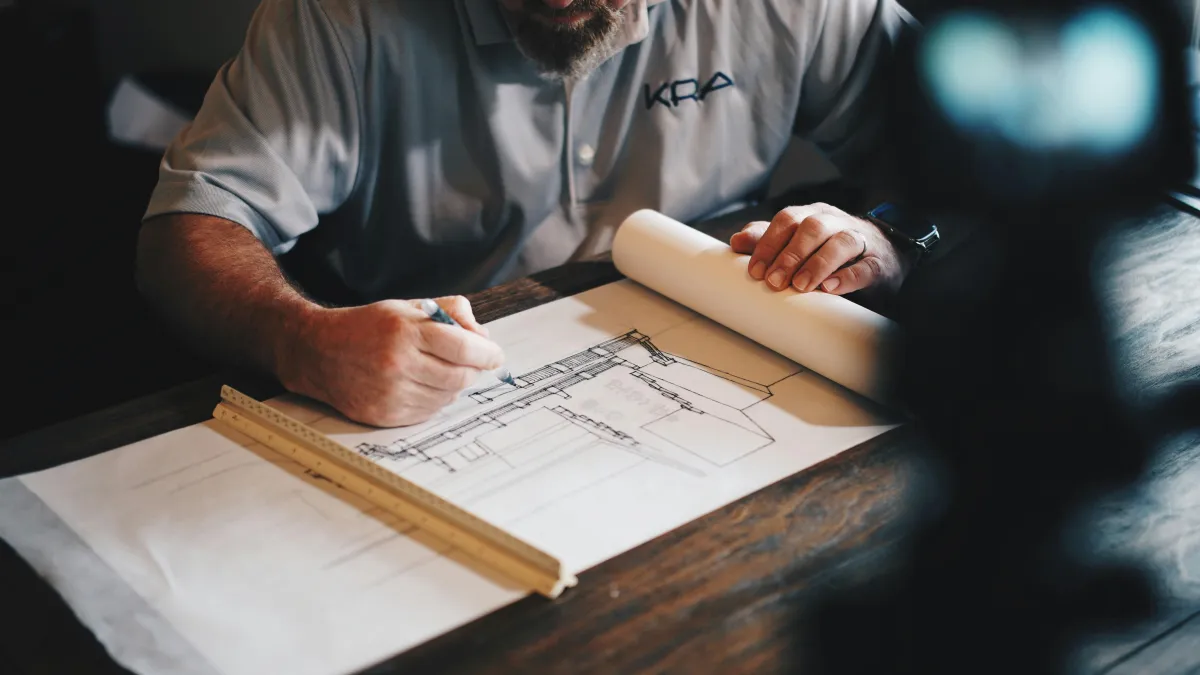
Achieve Success With Project Management for Construction
Effective construction project management planning is fundamental to establishing a strong foundation with clear project goals and realistic milestones. At the outset, project managers must articulate specific objectives that focus on meeting quality standards and emphasize controlling costs and ensuring safety. This critical first step is pivotal for successful project delivery, as it lays the groundwork for navigating the complexities inherent in construction projects. By defining these objectives, project managers enable teams to understand the overarching vision while providing a framework for decision-making that aligns with the project's scope and expectations.
Key Takeaways
Clear goals, phased scheduling, and scope definition guide construction success from day one.
Strong leadership and technical oversight improve on-site decision-making and accountability.
Accurate scheduling, progress tracking, and adjustments help meet deadlines and avoid disruption.
Real-time financial oversight and structured change order management protect budgets.
Quality control, risk planning, and safety checks ensure durability and compliance.
Communication protocols and digital records promote transparency and smoother collaboration.
Foundational Construction Project Management Planning for Success

Strong construction project outcomes begin with clear goals, realistic milestones, and structured planning. Defining the project's scope, timeline, and budget at this early stage ensures that every decision supports long-term objectives. A thorough breakdown of tasks creates accountability and provides a roadmap for each phase. By understanding regulatory expectations and integrating innovative planning tools, project managers can avoid setbacks and drive results that align with homeowner expectations.
Defining Clear Project Goals and Measurable Milestones
Beginning a successful project involves defining clear goals that resonate with the overall vision. Setting out measurable milestones assists in tracking progress continuously. A well-articulated project objective might include meeting specific sustainability targets or achieving a predetermined energy efficiency rating. These concrete markers are essential to managing scope creep and maintaining the project delivery timeline.
Developing a Comprehensive and Realistic Project Plan
A comprehensive project plan incorporates all aspects of work breakdown structure, resource allocation, timeline development, and financial projections. This plan should be realistically affordable and account for potential risks. Tools such as a detailed spreadsheet for cost estimation and project management software contribute to a data-driven evaluation of project viability. Using lean manufacturing principles in planning helps minimize waste and streamline procurement processes to keep construction costs under control.
Implementing Smart Time Management and Scheduling Strategies
Smart time management requires the application of both traditional scheduling methods, such as the waterfall model, and modern innovations like Kanban boards and agile sprints. The strategic use of project management software, like Microsoft Project or dedicated construction management tools, aids in scheduling tasks, tracking resource usage, and setting realistic deadlines. Additionally, integrating predictive analytics allows managers to forecast potential delays and adjust their planning in real time.
Allocating Resources Wisely for Optimal Project Execution
Resource allocation is more than just budgeting—it involves the strategic assignment of engineers, subcontractors, and material suppliers. Tools such as resource management dashboards and integrated project delivery platforms provide a clear picture of resource utilization. Proper allocation minimizes downtime and aligns workforce capacity with critical tasks, thereby improving efficiency. A comprehensive analysis of resource management techniques shows that projects with optimized resource allocation tend to experience fewer delays and lower costs.
Understanding and Adhering to Building Codes and Regulations
Compliance with local, state, and federal regulations is paramount in construction project management. Regularly reviewing updated building codes and conducting on-site inspections ensures that all construction activities meet required standards. Failure to adhere to these guidelines can result in costly revisions, delays, or legal issues. Quality control measures such as periodic site audits and rigorous documentation are significant in maintaining compliance throughout construction.
Core Project Management Skills for Residential Builds

Success in residential construction requires strong leadership, communication, and decision-making. Each team member must understand their role, and the construction manager must align all stakeholders. By applying consistent practices and leading, managers foster productivity and quality from start to finish.
Leading With Authority and Transparency
A construction manager must set the tone for professionalism and collaboration. Effectively delegating tasks, offering clear instructions, and managing expectations keeps momentum steady. Transparent leadership ensures accountability and reduces miscommunication.
Managing Subcontractors and Site Teams
Coordinating various trades on a home build requires scheduling foresight and attention to detail. Ensuring each subcontractor meets quality benchmarks and timelines is essential. Frequent walk-throughs and progress check-ins keep all teams aligned and productive.
Applying Technical Knowledge On-Site
Understanding how construction elements come together on-site supports real-time decision-making. Whether reviewing blueprints or inspecting materials, project managers should stay involved in technical conversations. This hands-on approach strengthens quality assurance.
Structuring Schedules and Managing Time Wisely

Timely delivery of home construction projects depends on detailed scheduling and progress tracking. With tools that offer visibility into workflows and potential delays, managers can respond quickly. A structured schedule allows teams to stay focused and meet critical milestones.
Creating a Realistic Timeline and Milestone Plan
Start by mapping the full project lifecycle—from pre-construction to final walkthroughs. Include realistic durations for each phase and build in time for inspections or potential delays. This ensures smoother sequencing and avoids last-minute surprises.
Monitoring Daily and Weekly Progress
Use dashboards and tracking tools to assess task progress. Comparing real-time data to the plan helps spot inefficiencies and redirect efforts when needed. Holding brief daily check-ins reinforces accountability and momentum.
Adjusting Schedules With Minimal Impact
Unexpected weather or material delays are typical. Flexibility in resourcing or sequencing tasks helps manage these setbacks. Proactive schedule reviews and updated forecasts help ensure the timeline stays intact.
Financial Oversight and Cost Control Tactics

Keeping costs within budget is a key responsibility in custom home building. Careful monitoring of expenses, change orders, and purchasing protects project profitability. Financial transparency gives both builders and homeowners confidence throughout the process.
Tracking Expenses With Real-Time Tools
Track material, labor, and indirect costs through financial dashboards or spreadsheets. Staying updated on each budget line allows managers to act early when expenses deviate, helping keep final totals aligned with initial estimates.
Managing Change Orders Effectively
Even minor changes can affect costs and timing. A standardized process for approving changes ensures that scope shifts are well documented. Updated pricing and timelines should be communicated before work continues.
Streamlining Procurement and Payments
Plan purchases based on construction phases to ensure materials arrive on time. Coordinate payment schedules with progress milestones to maintain cash flow. Maintaining strong supplier relationships also reduces the risk of late deliveries or price fluctuations.
Risk Management and Quality Control in Custom Builds

Proactive planning and structured oversight help manage potential risks and maintain build quality. Every phase should be subject to review and improvement. By applying industry best practices, builders can avoid rework and ensure homeowner satisfaction.
Conducting Inspections Throughout the Build
Scheduled inspections during framing, mechanical installs, and finishes are essential for quality assurance. Documentation of each step helps keep teams accountable and supports future warranty claims. Quick follow-up on findings reduces delays.
Identifying Risks and Planning Contingencies
Potential issues like material shortages, design conflicts, or subcontractor delays should be flagged early. Building contingency funds and alternate plans into the schedule ensures that these disruptions don’t halt progress.
Maintaining Construction Safety and Compliance
On-site safety standards and regular training minimize hazards and accidents. Adhering to local codes through routine audits protects timelines and project integrity. These practices also reduce liability and improve build outcomes.
Enhancing Collaboration Through Communication and Records

Smooth home construction requires active communication between all parties and consistent documentation. A clear system for sharing updates, approvals, and records minimizes confusion. This structure helps stakeholders stay aligned and supports timely decision-making.
Establishing Clear Communication Protocols
Designate how and when updates should be shared via software, email, or meetings. Set expectations for response times and documentation. This prevents delays and improves collaboration.
Documenting the Project in Real Time
Maintain a digital record of permits, contracts, submittals, and meeting notes. Organized storage helps answer questions quickly and supports transparency. These records are critical for closeout procedures and future reference.
Keeping Clients and Teams Aligned
Regular progress updates and walkthroughs help set realistic expectations. Visual documentation and reporting keep homeowners informed. Resolving questions quickly enhances trust and satisfaction throughout the build.
Frequently Asked Questions
What are the most important initial steps in construction project planning?
The first steps involve defining clear project goals, establishing measurable milestones, and developing a realistic project plan. These measures help manage scope creep, optimize resource allocation, and ensure compliance with building codes, setting a solid foundation for successful project execution.
Why is it essential to define project goals and milestones early in construction planning?
Early goal-setting provides a clear direction and purpose for the project, aligning teams and stakeholders with measurable outcomes. Defined milestones help monitor progress, prevent scope creep, and make it easier to adjust timelines or resources before problems arise. This structure builds a solid foundation that keeps the entire project organized and on track from day one.
How can project managers ensure continuous improvement during and after a project?
Continuous improvement is achieved by fostering a learning culture, maintaining detailed documentation, and conducting regular performance evaluations. After project completion, a thorough closeout process gathers feedback and lessons learned, which can be integrated into future projects to enhance outcomes.
What tools are best for tracking expenses and managing budgets in construction projects?
Effective tools include construction-specific financial dashboards, spreadsheets, and integrated platforms like Buildertrend, CoConstruct, or Microsoft Project. These allow real-time tracking of costs, budget comparisons, and change order management. Staying updated on financial metrics helps maintain transparency and ensures timely corrective actions when budget deviations occur.
What are the benefits of integrated project delivery (IPD) in construction?
IPD enhances collaboration among all project stakeholders by providing a unified approach to sharing data and responsibilities. This results in higher quality outcomes, shorter project timelines, and improved safety records through better communication and joint decision-making processes.
Conclusion
Successful construction project management hinges on clear planning, robust risk management, and the effective use of technology. By integrating traditional methodologies with modern digital tools, project managers can deliver projects on time and within budget while maintaining high quality. Continuous improvement and transparent stakeholder communication play critical roles in long-term success. Homebuyers and property owners can be confident that these practices will lead to projects that meet rigorous standards and client expectations.


